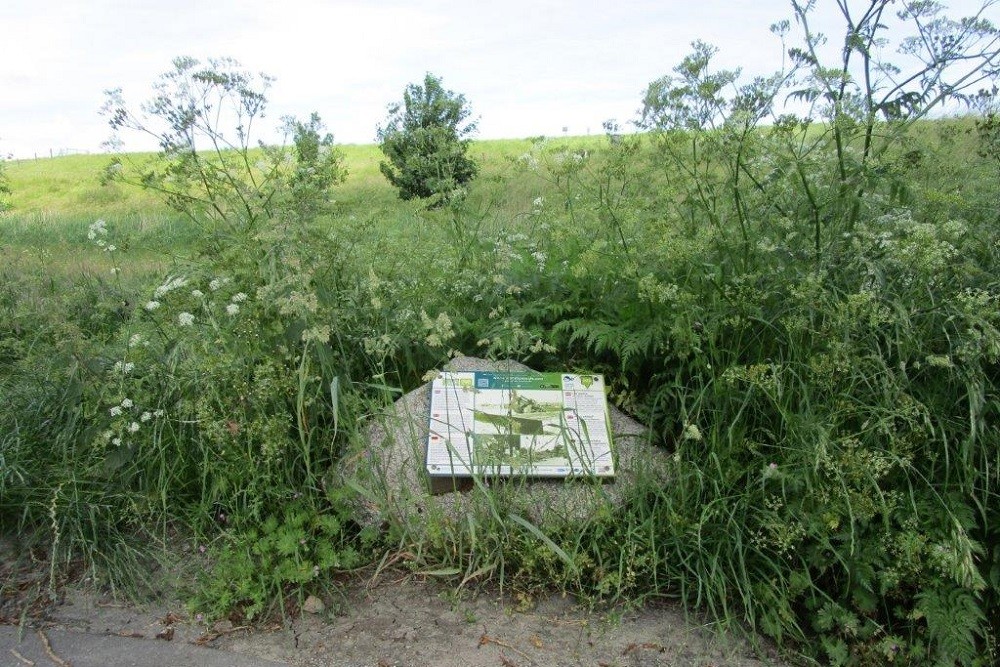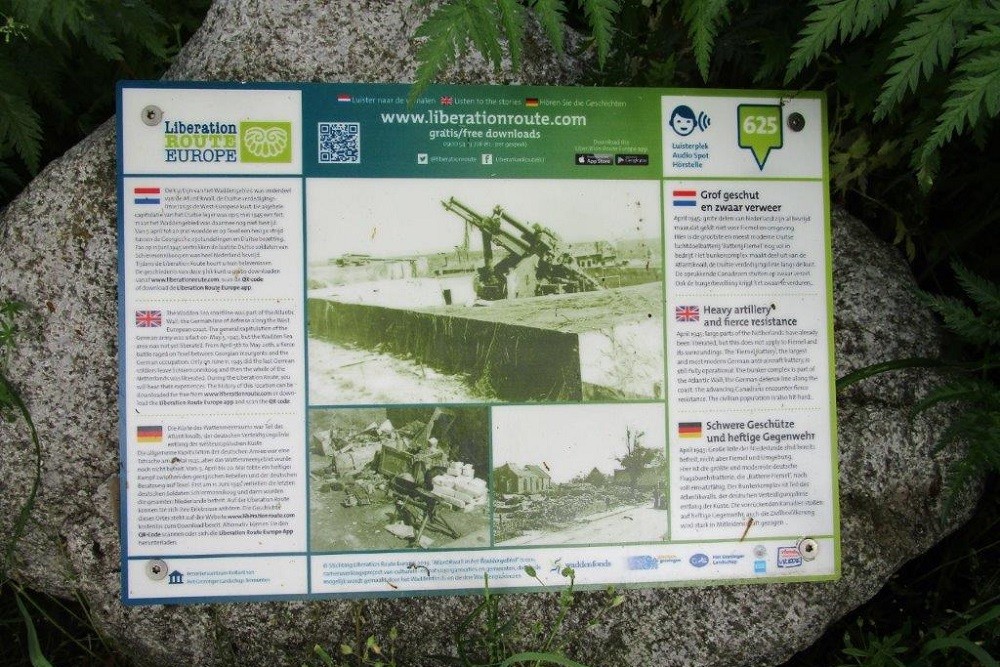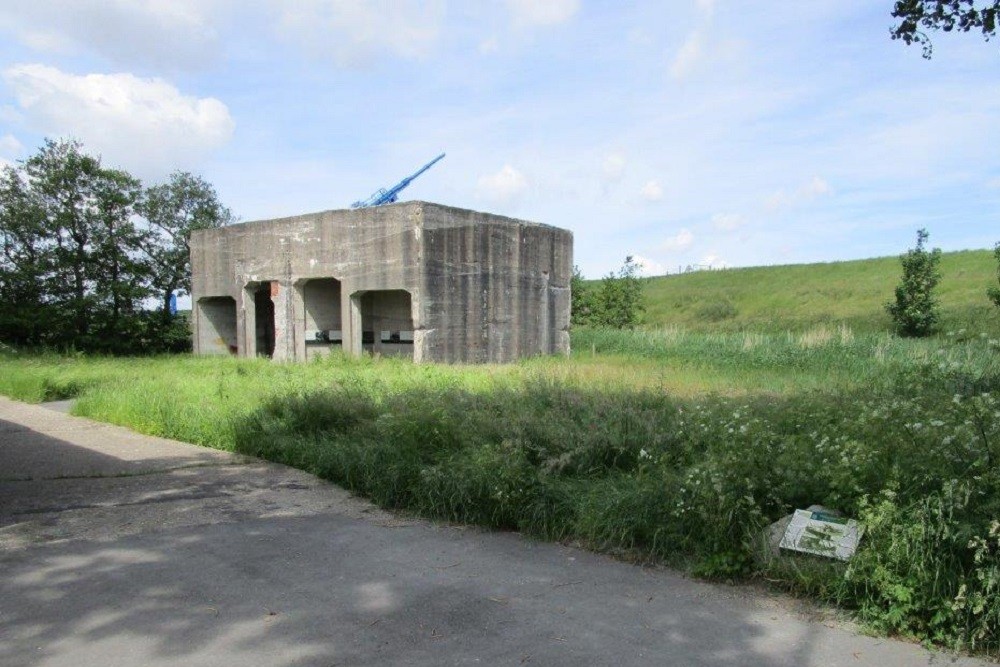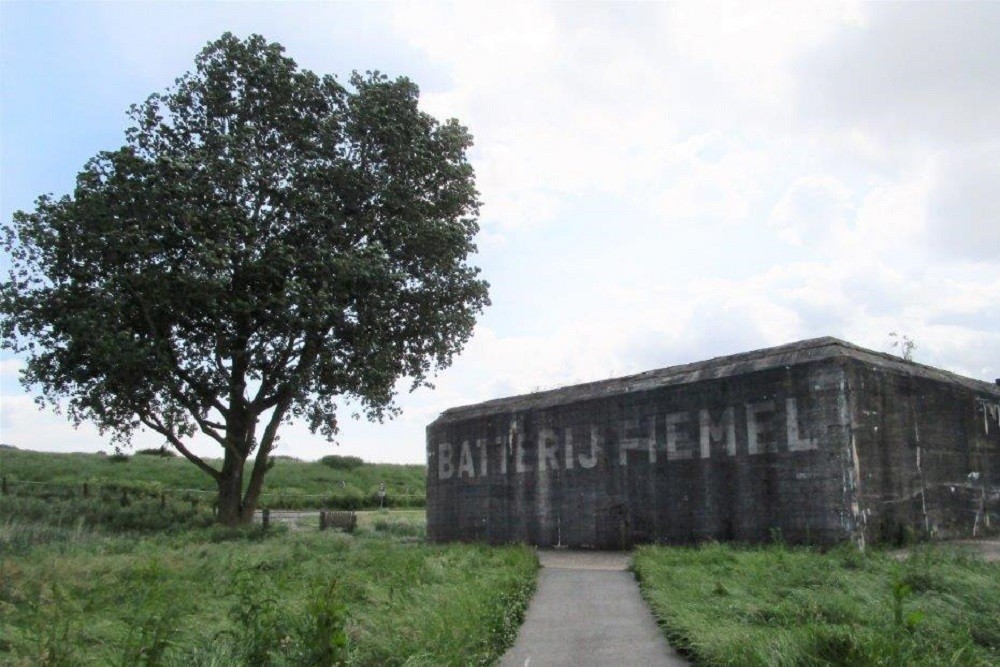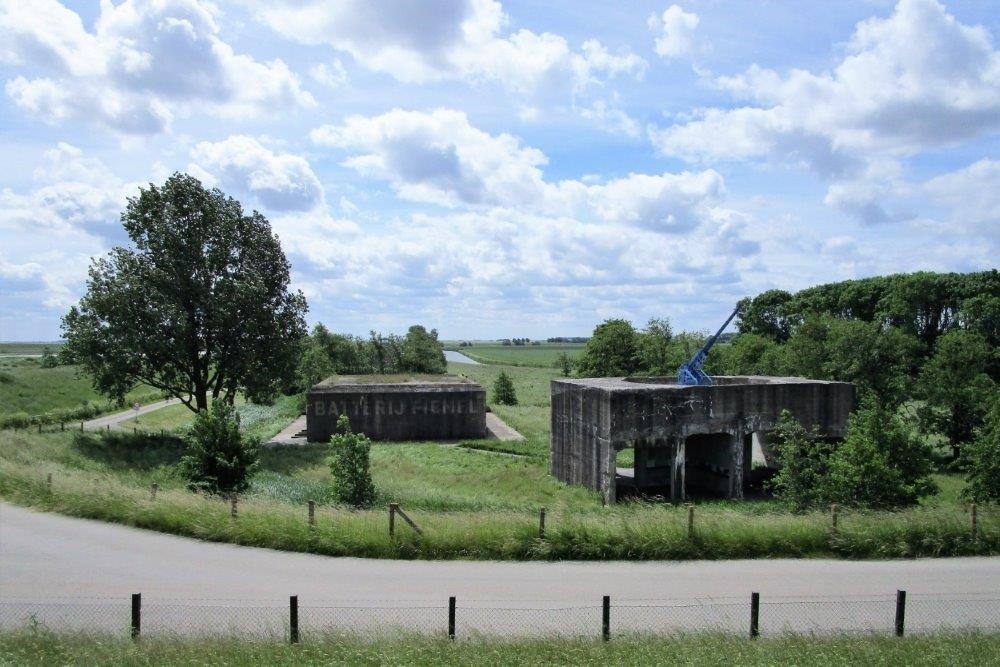Liberation Route Marker 625: Heavy artillery and fierce resistance
Heavy artillery and fierce resistance
After the invasion of Normandy on 6 June 1944, the Atlantic Wall was breached, and there was an opportunity to attack from land, also in the area of Delfzijl. The section commander of Emden, which included Delfzijl, had ordered that the coastal strip of Emden and Delfzijl be fortified with bunkers and guns. The work was to be done by local companies with the help of Russian POWs. The battery needed to be able to shoot targets on land now as well. The Germans built a so-called “Flak-hochstande”—bunkers built especially for the heavy 12.8 cm FlaK 40 anti-aircraft guns. The bunkers were placed in such a way that they could focus on land, sea and air targets behind the dyke. The battery eventually became the heaviest and most-modern anti-aircraft battery in the Netherlands.
During World War II, the German occupiers built bunkers near Fiemel. These were part of the Atlantic Wall: not a “real” wall, but a series of strategically located defenses to prevent an Allied invasion. This defense line of more than 5,000 km consisted of bunkers, cannons and minefields, but was never fully completed. Construction was a huge undertaking, hundreds of thousands of people worked voluntarily - and compulsorily - on its realization.
The bunkers at Fiemel served to defend the German city of Emden, located on the Ems estuary. On April 15, 1945, the residents thought that liberation was near, because some discouraged German units had left. Large parts of the Netherlands had already been liberated in the meantime. But their joy gave way to disappointment when new, fanatical occupiers came in return. They built defensive lines in the polders between Termunten and Woldendorp. The Canadians made their advance but had to retreat after a violent confrontation with the Germans. From the artillery at Fiemel and in the Carel Coenraadpolder, Nieuwolda was bombed. The damage was awesome and many civilians and soldiers died in this battle. The landscape and the lives of local residents lay in ruins.
The Canadians were later more successful in a second attempt, again suffering tremendous damage to the area. They open fire on the position at Fiemel and bombard the Germans with tanks. Fear and uncertainty set in among the Germans, who decide to take a boat across the Ems to their homeland in the early morning of April 30. On May 2, 1945, the province of Groningen is liberated. North and South Holland follow later.
Audiospot - Heavy artillery and fierce resistance
Liberation Route Europe is a certified Cultural Route of the Council of Europe. With hundreds of sites and stories in nine European countries, the route links the main regions along the advance of the Allied Forces in 1943-1945.
The entire route consists of themed routes that can be travelled by by hiking, walking, cycling and car. These routes pass numerous historical and interesting sites and tell stories from a multitude of perspectives that were important in the final phase of World War II.
Many routes feature listening spots, offering the opportunity to listen to a historical story at a location. In addition, many ‘Vectors of Memory’ have been placed, indicating that the passer-by is on one of the Liberation Routes.
The routes can be found on the Liberation Route Europe website or in the app through which many stories can also be listened to.
Do you have more information about this location? Inform us!
Source
- Text: TracesOfWar & Liberation Route Europe
- Photos: Arie van Wijngaarden
Related books
Nearby
Monument
Remembrance Stone
- Stumbling Stones Schepperbuurt 36 - Termunterzijl
- Stumbling Stone Burgemeester Garreltsweg 21 - Woldendorp
- Stumbling Stones Borgsweer 34 - Borgsweer
